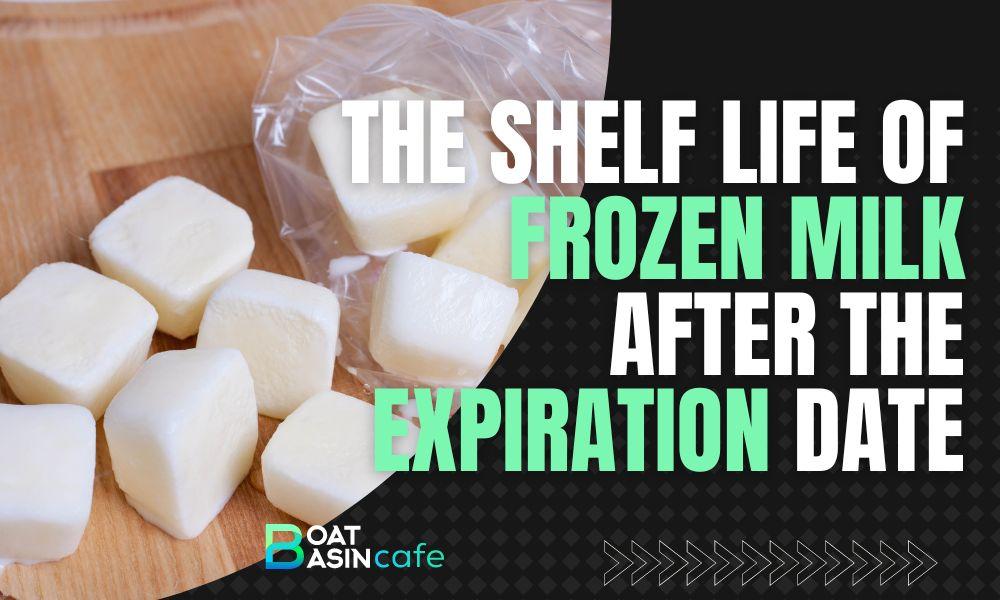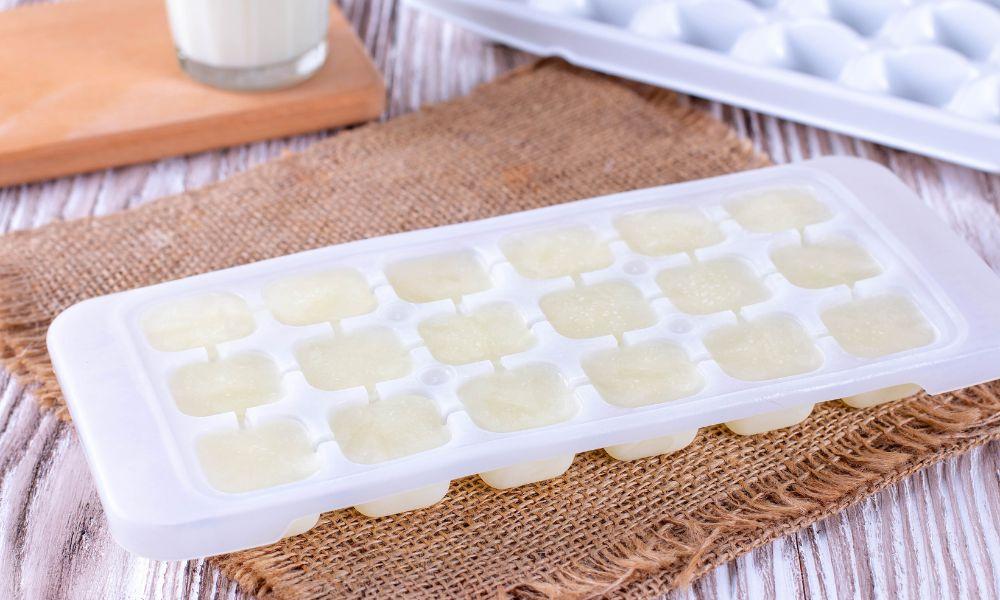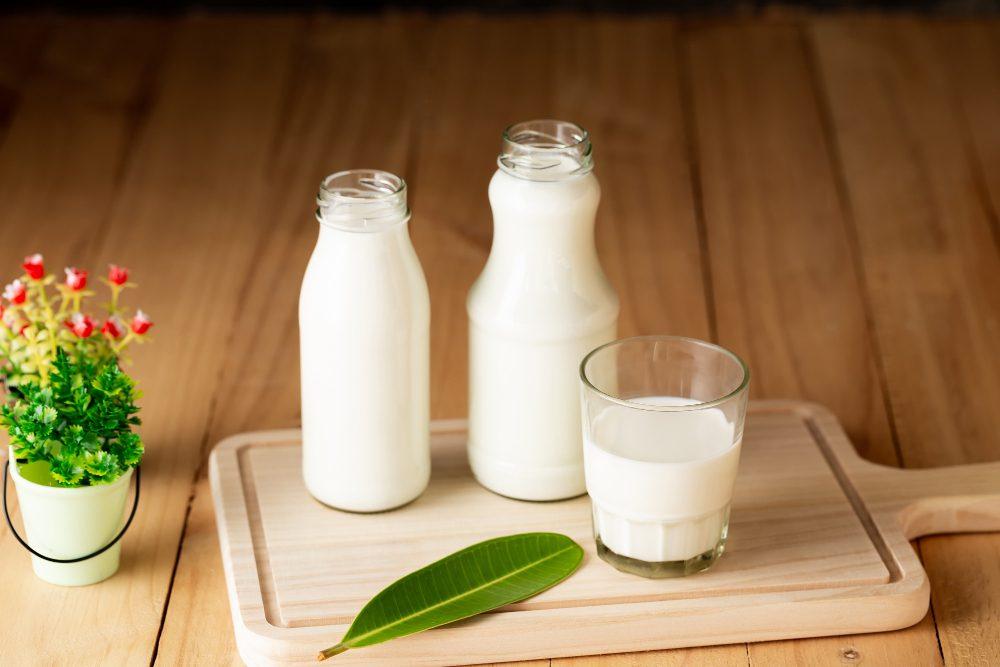If you’re anything like me, you’ve probably found yourself in a situation where you had leftover milk that was close to, or even past, the expiration date. Should you throw it away, or would it be a good idea to freeze it and use it later? This article aims to shed some light on the shelf life of frozen milk after the expiration date. We will be discussing factors that can affect the longevity of frozen milk, signs of spoilage, proper storage techniques, and some frequently asked questions.

How Long Does Frozen Milk Last After Expiration Date?
The shelf life of frozen milk may vary depending on several factors. Generally, frozen milk can last for up to three months past its expiration date. However, it’s important to note that the quality, taste, and texture of the milk may change during the freezing process, and it may not be as enjoyable as fresh milk.
Factors affecting the longevity of frozen milk include proper storage conditions, packaging methods, the quality of milk before freezing, and the impact of freezing and thawing on overall milk quality. Let’s dive deeper into these factors and learn more about them.
Factors Affecting the Shelf Life of Frozen Milk
🌡️Temperature and Storage Conditions
One of the most crucial factors affecting the shelf life of frozen milk is the temperature at which it is stored. The ideal temperature to store frozen milk is 0°F (-18°C), as it helps preserve both the taste and quality of the milk. Any fluctuations in temperature can reduce the shelf life and impact the overall quality. Make sure to store the milk in the back of the freezer to avoid temperature fluctuations often caused by opening and closing the freezer door.
As for storage conditions, it is best to protect the milk from direct light and heat sources. This is best achieved by maintaining a consistent temperature and using proper packaging.
📦Packaging and Sealing Methods
Proper packaging is essential to keep frozen milk fresh and maintain its quality. Using airtight containers or heavy-duty freezer bags will help prevent freezer burn and keep the milk safe from harmful bacteria that may grow due to exposure to air.
When using freezer bags, make sure to squeeze out any excess air before sealing, as this helps in preserving the milk’s quality and preventing ice crystals from forming. Additionally, do not forget to label the containers or bags with the date of freezing and expiration.
🥛Quality of Milk Prior to Freezing
Another critical factor affecting the shelf life of frozen milk is its quality before freezing. The fresher the milk, the longer it will maintain its quality and taste when frozen. If the milk is already close to or past its expiration date, freezing won’t magically restore its freshness. Instead, it will only extend the life to a certain extent, and the milk should be used within a shorter time frame.
Impact of Freezing and Thawing on Milk Quality
Freezing milk may change its taste, texture, and consistency. The formation of ice crystals during the freezing process can lead to slight separation and graininess, impacting the overall appearance of the milk.
It’s worth mentioning that when I froze some milk close to its expiration date as an experiment, I noticed a difference in taste and texture – it tasted a bit flat and slightly grainier than fresh milk. However, it was still safe to consume, and I ended up using it for my morning coffee and smoothies to reduce waste and get the most out of my supply.
Also, it’s essential to keep in mind that the thawing process will affect the quality of the milk. Thawing the milk in the refrigerator is the safest method, as it maintains a consistent, safe temperature. Never thaw milk at room temperature or by using a microwave, as it increases the risk of bacterial growth.
Signs of Spoilage in Frozen Milk

How can you tell if your frozen milk has gone bad? Here are a few signs of spoilage to watch out for:
Visual Indicators of Spoilage
When checking for signs of spoilage, pay close attention to any visual changes. If the milk appears curdled or separated, it may have gone bad. This is different from the graininess and slight separation mentioned earlier, which are normal after freezing and thawing.
Odor Changes and Off-flavors
Another indicator of spoilage in frozen milk is a change in odor. If the milk smells sour or off, it is most likely unsafe to consume. Also, if the milk tastes bitter or sour after thawing, it may have gone bad. When I experimented with freezing milk, I made sure to avoid using any milk that had an off-smell or taste, as it is an indicator of spoilage and potential risk to my health.
Texture and Consistency Changes
Keep an eye out for any unusual texture or consistency changes in the milk. If the milk has curdled or thickened, it might be spoiled and unsafe to consume.
Proper Storage Techniques for Frozen Milk

To help preserve your frozen milk and extend its shelf life, you should follow these proper storage techniques:
Recommended Temperature for Freezing Milk
As mentioned earlier, the ideal temperature to store frozen milk is 0°F (-18°C). This temperature helps preserve the milk’s taste and quality and minimizes the risk of contamination or spoilage. Always keep your freezer well-maintained and set at the correct temperature for proper storage.
Packaging Recommendations for Optimal Preservation
To minimize the risk of freezer burn and maintain milk quality, use airtight containers or heavy-duty freezer bags for storage. As mentioned earlier, remember to squeeze out excess air and label the containers with the date of freezing and expiration.
Tips for Preventing Freezer Burn and Flavor Transfer
To prevent freezer burn and flavor transfer from other items in your freezer, make sure to wrap your milk containers in plastic wrap or aluminum foil. This additional layer will protect your milk and help maintain its taste and quality.
If you loved this info on frozen milk, you might find the related article on canned coconut milk expiration interesting too!
FAQs
Can you use frozen milk after the expiration date?
Yes, you can consume frozen milk after the expiration date, but make sure it was properly stored and hasn’t soured. Frozen milk can be stored for up to three months after its expiration date. However, keep in mind that the taste, texture, and consistency of the food may alter during the freezing process.
How do you determine if frozen milk is still good to use?
To determine if frozen milk is still good to use, look for any visual indicators of spoilage, check the smell, and taste-test after thawing it. Be cautious of any sour odors, off-flavors, or unusual changes in texture.
What should I do if my frozen milk has passed the expiration date?
Before using frozen milk that has passed its expiration date, inspect it for signs of deterioration. If there are any signs of deterioration, discard the milk to avoid health concerns. If it looks and smells OK, you can still use it within a reasonable time limit, albeit the flavour and quality may not be as good as fresh milk.
Can you freeze milk before the expiration date to extend its shelf life?
Absolutely! Freezing milk before the expiration date is an excellent way to extend its shelf life and reduce waste. Just make sure to properly store and package the milk to preserve its quality and minimize the risk of spoilage. Remember, fresher milk will have a longer shelf life when frozen.
Are there any safety concerns with using frozen milk after it’s expired?
The primary safety concern with using frozen milk after its expiration date is the risk of spoilage and potential bacterial growth. Following the proper storage techniques and checking for signs of spoilage can help mitigate these risks and maintain the quality of the milk.
Conclusion
In summary, it is possible to safely use frozen milk after its expiration date as long as it is stored correctly and checked for signs of spoilage. Be mindful that the taste, texture, and consistency may change during the freezing process. Always remember to prioritize food safety and adhere to proper storage and handling guidelines. By doing so, you can make informed decisions and extend the shelf life of your milk, reducing waste and getting more value out of your milk supply.
While experimenting with freezing milk myself, I’ve learned that it can be an effective way to preserve milk and reduce waste without compromising safety. Just remember to be cautious and follow best practices like proper storage, handling, and thawing.
Remember, stay informed, and keep an eye out for signs of spoilage to get the most out of your frozen milk, even after the expiration date!
References
- U.S. Food and Drug Administration. (2021). Are You Storing Food Safely? Retrieved from https://www.fda.gov/consumers/consumer-updates/are-you-storing-food-safely
- Dairy Council of California. (n.d.). Freezing Milk. Retrieved from https://www.healthyeating.org/milk-dairy/dairy-facts/cheese/article/freezing-milk
- Berfield, S. (2021). Can You Freeze Milk? (Expiration, Storage, and More). Retrieved from https://healthycanadians.gc.ca/recall-alert-rappel-avis/hc-sc/2012/14129a-eng.php
- Food and Drug Administration. (n.d.). Refrigerator & Freezer Storage Chart. FDA.gov. Retrieved from https://www.fda.gov/media/74435/download








